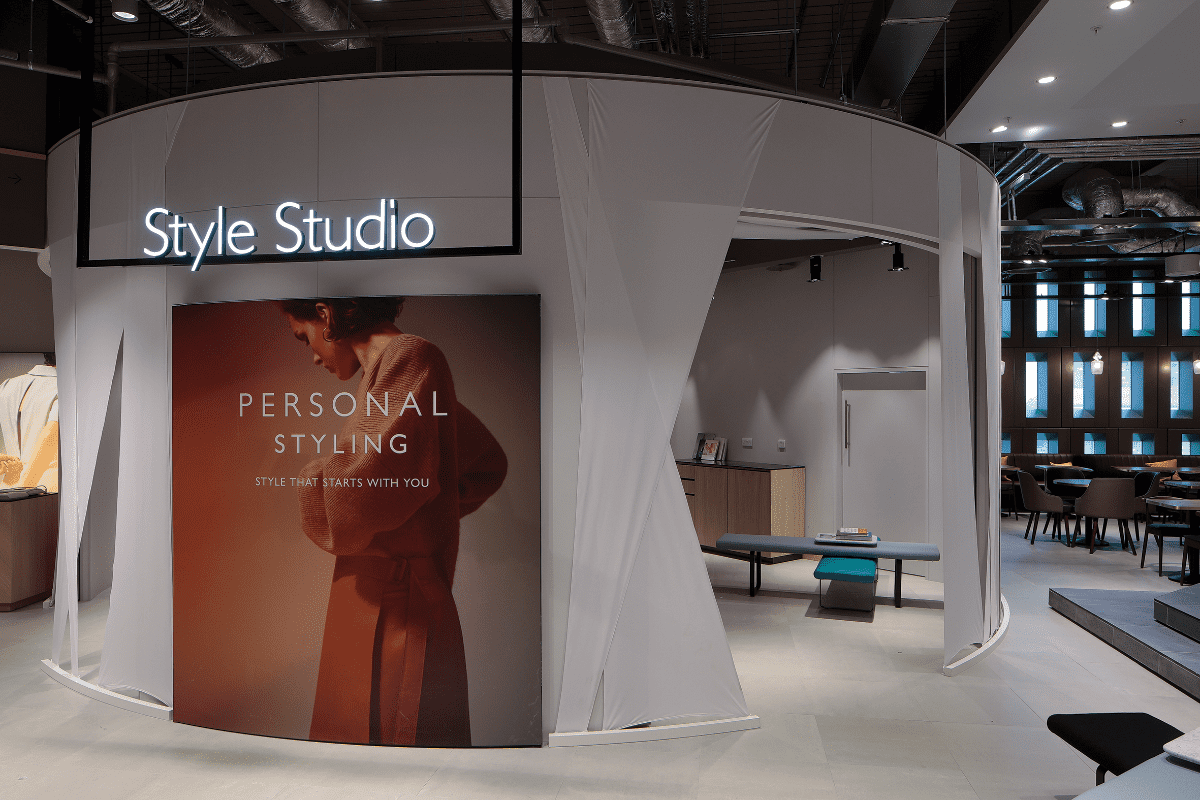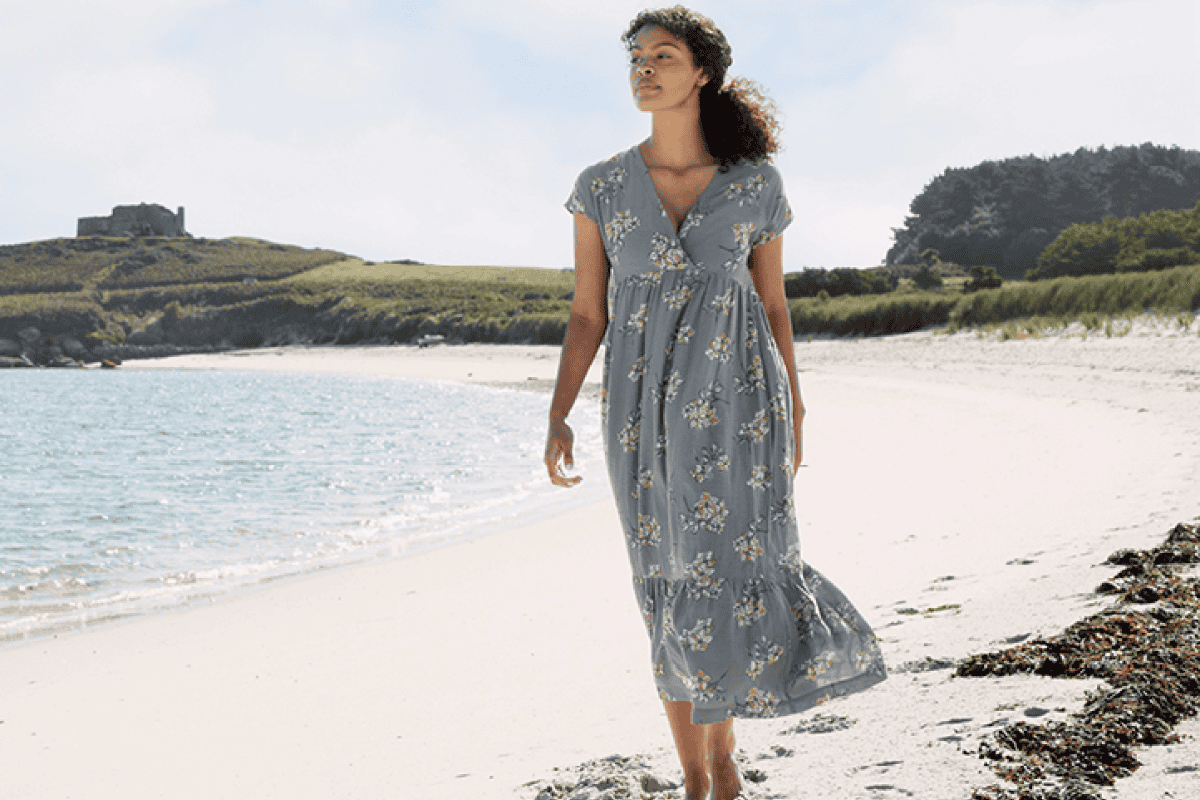In what is proving a year of change in retail, Chloe Rigby assesses how the industry is adapting its strategies as customers use new ways of shopping – and what that means for the role of the store
The role of shops is changing – and fast – in retail.
Shoppers are more willing to buy online: doing so is now much easier and more convenient. The growing sophistication of smartphones and, more recently, voice commerce, makes it easier for people to browse, buy and even take delivery of their online orders wherever they are, and without ever needing to set foot in a store – unless they want to. The multichannel mantra of buying wherever, whenever and however they like is now a reality.
Consumers have embraced the change. Figures from the UK’s Office for National Statistics (ONS) suggest that shoppers are now buying a record proportion of their retail purchases via the internet. The ONS’ Retail Sales report for July 2018 found that 18.2% of retail sales took place via ecommerce. That’s up from 16% a year earlier.
The same report suggests that some sectors are moving online much faster than others; department stores, for example, saw their online orders grow by 35% that month, to account for 18.2% of total retail sales in the category – up from 13.8% a year earlier. The July 2018 ONS report said: “Spending online continued to reach a new record proportion of all retailing… with strong growth in department stores also reaching a record proportion.”
But even with record online spending, it’s in stores that most retail transactions take place. If 18.2% of July retail purchases were online, then more than 80% – give or take a small amount via mail order and over the phone – were online. Land Securities said in its latest full-year results that 85% of retail spending still touched a store, while Argos, the first UK retailer to turn over £1bn a year from mobile commerce, said very recently that 80% of its online transactions are picked up in stores.
Given that technology means that shoppers with access to an internet connection no longer have to visit shops, the figures suggest that many shoppers still want to be able to buy in-store. That may be because they want to touch and feel or try on an item, or it may be because they’re in a rush to have the item for a specific event or because they want to be able to see the range. Nonetheless, the role of stores is changing – and leading IRUK Top500 retailers are now finding new ways to use their stores that work for their customers. For while most sales still happen in stores, visitor numbers have been down over the course of summer 2018 and the market remains competitive. Shoppers need a reason to come into one store rather than another, and a reason to visit a store rather than simply clicking to buy. Rethinking the purpose of the store in an internet age is now at the centre of many retail strategies at a time when, says Land Securities’ chief executive Robert Noel, “the gap between the best space and the rest keeps growing.”
Stores as an experience
Experience-led destinations, says Land Securities’ Robert Noel, will be key to the future of the retail industry as shopping habits change while at the same time traders’ costs increase through the National Living Wage, business rates and investment in multichannel technology. In the property developer and operator’s 2018 full year results, Noel said that there was a growing gap between different types of store locations. “To thrive, an asset must be dominant in its catchment and provide convenience or experience,” he said, adding: “There’s clearly an important role for great physical retailing in a multichannel world, not least enabling brands and shoppers to connect in a variety of exciting ways.” Alongside this, it says, shoppers need other experiences, from cinemas to restaurants and more.
Retailers and brands are interpreting the move towards experience in different ways. Department store John Lewis, a Leading retailer in IRUK Top500 research, is focusing on the service that its partners can offer customers. It’s training personal stylists to offer fashion talks, and store staff to offer a concierge-style experience that wouldn’t be out of place in a leading hotel. In-store, its staff are booking places in interior design workshops and tables in restaurants for its customers.
Online, it’s offering easy booking of trade services, often related to products they can buy in the store. This, said John Lewis this June, is its response to “a period of generational change” to which “every retailer’s response will be different”. Sir Charlie Mayfield, chairman of the John Lewis Partnership said, at the time that that business was unique with different ownership, purpose and outlook to its competitors. “As retail changes we need to tread a path that enables us to thrive as a business while building on the qualities that make us different,” he said. “For us the relentless pursuit of greater scale is not the right course. Our plans put differentiation, innovation and Partner-led service at the heart of our offer.”
Retail as destination and experience means, indeed, different things to different retailers and brands. For Nespresso, the store is a place to explain what its products are about, how coffee machines work, and how they differ.
It’s also a place to showcase its wide range of coffee blends and express values such as the importance of recycling and how that applies to its coffee pods.
Apple, meanwhile, has long used its stores as a showroom where visitors can browse the technology they’d like to buy and seek expert advice in what would best suit their needs. Retailers and brands looking to make their store a destination are exploring retail theatre and experiences that give shoppers something to do in the store other than browse and buy. These are all about giving shoppers a comfortable venue to explore the brand’s full range and get one-to-one advice around their individual needs, when they have the time to spend doing that.
STORES FOR CONVENIENCE
But often there isn’t the time for leisurely choice. Time-pressed shoppers may want to buy in the way that’s easiest and fastest for them, as they look to fit necessary retail purchases into busy days. They’re looking for convenience.
Leading IRUK Top500 retailers have developed a variety of strategies to meet these shoppers’ needs. John Lewis – at London Heathrow airport and London St Pancras rail station – and Argos – at Cannon Street underground station – are among the retailers that have opened stores or pick-up points specifically for commuters to pick up their online orders on their way to or from work. Burberry enables travellers to pick up their orders while they travel through a variety of airports.
On the high street, department store Debenhams and supermarket Morrisons have both teamed up with Doddle to enable shoppers to pick-up and return not only online orders from their own websites, but from a range of other retailers’ websites, following in the footsteps of Asda, and its similar ‘toyou’ service.These retailers not only provide their customers with a convenient service in their own stores, but they also bring those other businesses’ customers into their own stores, where it’s more than likely they will make a purchase while they’re there: Debenhams says that when it trialled the Doddle service, 40% of tracked transactions were by users new to its stores; 30% of users also spent an average of £25 in-store.
Perhaps the biggest step towards convenience was taken by Sainsbury’s in buying Argos. Part of its thinking in doing so was to enable supermarket shoppers to carry out their other retail errands at the same time as they do a big supermarket shop. Following the acquisition, Sainsbury’s now has more than 200 digital format branches of Argos in its stores, where customers can browse screens and place online orders, collect parcels and return those that aren’t needed. It has also used Argos systems as a foundation for a network of its own in-store collection and returns points. Argos has also recently launched its Voice Shop: customers can speak their order to a Google Assistant device, whether a smartphone or a smart speaker, and pick up the product in-store. Argos says that while six in ten of its retail transactions start online, 80% of online orders are collected from a store.
ADAPT TO SURVIVE
The demand for experience and convenience in an age of multichannel retail is driving fast and significant change in the retail sector. As well as opening new, strategically placed stores that meet the needs of shoppers from commuters to leisurely browsers, retailers that traditionally had a branch on every high street are now closing stores and developing small format versions of previously larger stores as they ‘right size’ their networks to meet new levels of shopper demand.
The Centre for Retail Research (CRR) has said it expects 2018 to be the worst year for retail jobs since the recession of 2008. It said that that 18 large and medium sized retailers had gone bust in the first 100 days of this year, including Toys R Us and Maplin. Others, from House of Fraser at one end of the spectrum to Poundworld, at the other have followed. The CRR forecasts a total of 10,000 store closures this year. Mothercare, New Look and Carpetright are among those using company voluntary arrangements (CVA) to slim down their estates.
In June 2018, carpets-to-beds business Carpetright laid out the scale of the challenge facing it as it reported full-year figures. Its challenge, it said, was to adapt to the behaviour of customers whether those customers never want to visit a store or whether they want to buy using a range of channels, including stores and online. That’s a big ask, especially given that, said chief executive Wilf Walsh, it had a “historically oversized and over-rented estate”. Its answer to that challenge was to close 81 underperforming stores from a total estate then totalling 545. It used one of the many CVAs seen in the retail sector so far this year. Carpetright plans to grow its range and develop an extended online offer. While it will focus on value beds, it will only stock them where it has space. At the same time, it plans to develop its online services to the point that someone who would never visit a store would be able to choose a carpet and the accessories to go with it entirely online “with confidence and complete the end-to-end experience without needing to visit a retail outlet or talk to a human being”. Artificial intelligence, for example, will be deployed as it looks to automate and personalise customer service.
Walsh also had a word of warning for the wider retail industry. “The sad demise this year of a number of traditional retailers is partially down to the fact they were not ‘Amazon proof’ and most of the products they sell could be chosen online and delivered to the home the next day. While choosing floor coverings is not such an easy sell, we are not being complacent.”
There’s a divide, however, between the traditional retailers with sometimes outsized store estates and emerging newcomers who are building up their estates to suit multichannel trading models. Both Quiz and Footasylum are doing just that. Footasylum, indeed, recently said that some of its stores needed to be bigger.
“The board believes that upsizing certain stores will materially improve Footasylum’s existing strong brand relationships while enhancing the consumer experience in store. in order to improve the experience both of the brands that it works with and of its customers,” it said in a September 2018 trading statement.
There’s no denying this has proved a turbulent and challenging year – and the situation doesn’t look likely to change in the near future. Indeed, 2019 could bring even more of a bumpy ride for UK retailers, depending on what happens with Brexit negotiations.
Strategies seem likely to be geared for a time of change. Retailers will no doubt continue to adapt their stores and their store estates in response to the changing way we now shop. This will be difficult, but it may also be necessary if retailers are to stay relevant to their customers at a time of generational change.







